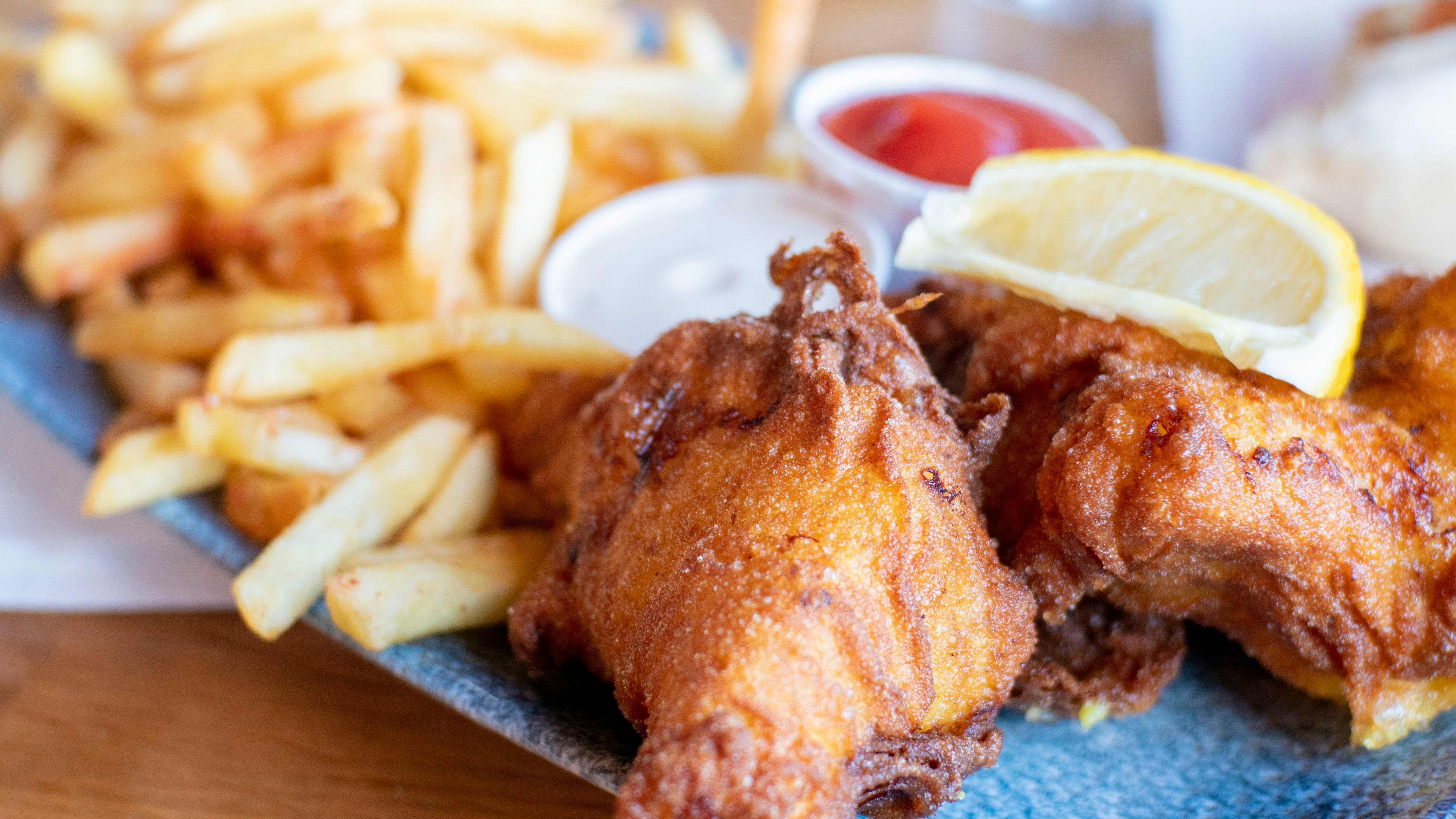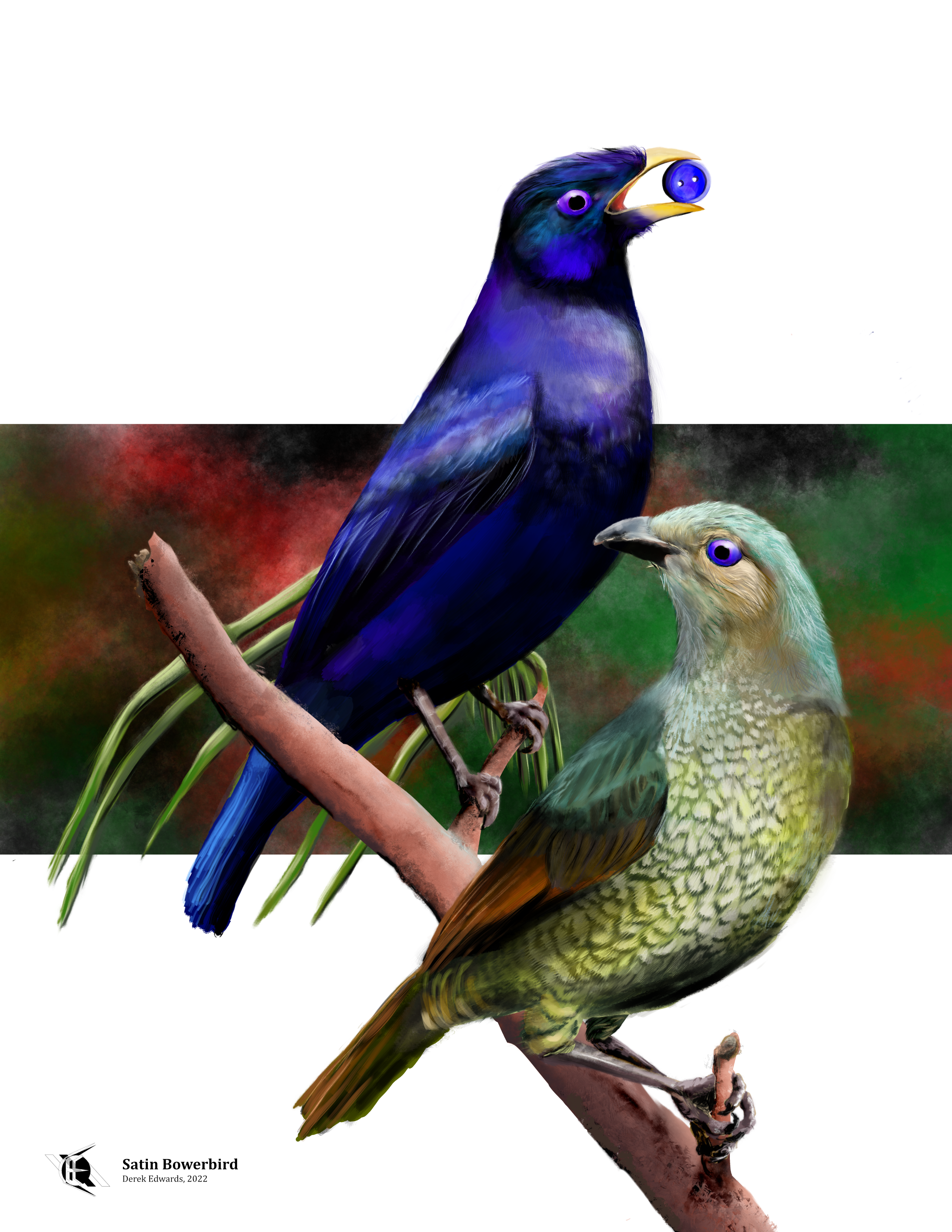
Running Commentary 8/15/2022
Hello,
An update regarding last week’s Bird of the Week: I mentioned how the scarlet tanager had recently been reclassified into the Cardinalidae family. This past week, I came across a report that a hybrid specimen, a cross between the scarlet tanager and long-established cardinalid the rose-breasted grosbeak, had been found in Pennsylvania. Even though they’re now understood to be in the same family, the tanager and the grosbeak are in different genera and aren’t generally regarded to be all that closely related. Now, one instance of hybridization probably isn’t going to turn the scarlet tanager’s taxonomy on its head again. Still, it’s a good thing to keep in mind that the classification of birds, or of other things for that matter, is often a messy thing, and we’re often left to make our best guess based on what data we can gather and what criteria we can establish. So when I write that such-and-such a bird is in such-and-such a genus which makes it such-and-such related to such-and-such other bird, always remember that all that only almost means anything.
Anyway...
Watching...
BattleBots
The second episode featured Lock-Jaw as the gatekeeper fight. Lock-Jaw won an episode of Bounty Hunters, which earned it the gatekeeper role here. Let’s look at the fights:
- RIBBOT v DOUBLE JEOPARDY - Twin lawyers Evan and Bryce Woolley have a good name for their robot, and a creative concept. But Double Jeopardy is built around a faulty idea that your average BattleBot will be seriously damaged by blunt projectiles. Ribbot got its frog-shaped facia blown off at the start of the fight, but the actual, functional parts of the bot were missed entirely. Ribbot made short work of Double Jeopardy from there.
- SLAMMO v MALICE - Malice won, but it really should have won more decisively. Slammo had control for most of the match, only losing because Malice seized on some opportunities to go for its tires. Malice’s “bunny tail” worked to keep it from getting stuck up on its back end again, but Malice was still deflected upright a few times.
- PAIN TRAIN v SHATTER - Pain Train did a lot better this year than in its 2020 debut, but it was barely-to-non functional then and is only basically okay now, and its design is a poor match-up against a bot like Shatter. Several hammer-blows-to-the-lid in, Pain Train’s weapon quit.
- HUGE v DEEP SIX - Deep Six and Huge are both meme designs, and I had no idea who would win this match-up. Each negated the other’s reach advantage, and Huge’s resilient plastic wheels blocked any real damage from Deep Six’s weapon, up to a point. Eventually, Huge lost weapon and partial drive functionality, and thus the judge’s decision.
- MALICE v RIBBOT - Facing a horizontal spinner, Ribbot went with its vertical weapon. It made the first hit of the fight, and it made it count, throwing Malice’s drive out of whack for the rest of the match.
- DEEP SIX v SHATTER - Deep Six didn’t have the armor to survive a hit from Shatter’s hammer, but they did have a huge windmilling blade that they cleverly used to keep the hammer at bay. Shatter got tossed around until it got high-centered and counted out. I’m not really sure what Team Shatter saw that made them think they were still in the fight.
- DEEP SIX v RIBBOT - After two weirdly advantageous match-ups, Deep Six finally faced off against a fairly typical battlebot. Ribbot spent most of the fight warily circling Deep Six, waiting for it to make a move. Ribbot did manage to take out one of Deep Six’s wheels, but still kept backing off. I honestly thought Ribbot was going to lose a judge’s decision for lack of aggression, but Deep Six was counted out before the timer ran out.
- RIBBOT v LOCK-JAW - Lock-Jaw is a respectable robot, but it had a bad last season, so I was unsurprised to see it lose to Ribbot here. Ribbot, for all the goofyness of its look, really is a solidly built bot who I’m happy to see move on to the finale.
Eating...
Most people don’t eat enough fried fish. It’s delicious, but it’s tricky to get right. Here’s a recipe I’ve found successful:

Ingredients
- 2 pounds whitefish cut into long, 3-ounce pieces (cod or pollack are generally easy to find, but grouper, walleye, or even perch will also work if you have them. Don’t use trout; even though it has white flesh, it’s a lot more like salmon.)
- Dredge
- 1/2 cup all-purpose flour
- 1/4 cup corn starch
- Batter
- 1 1/2 cups all-purpose flour
- 2 1/2 teaspoons salt
- 2 teaspoons sugar
- 1/2 teaspoon baking powder
- 1/2 teaspoon baking soda
- 1/2 teaspoon paprika
- 1/4 teaspoon ground black pepper
- 1/4 teaspoon onion powder
- 16 ounces club soda
- Oil for frying
Instructions
- Get a pot of oil heating up. You’ll want it to hit 350 °F before you start frying.
- Mix up the dredge.
- Dredge the fish so that it’s evenly covered. You’ll still be able to see the fish through the dredge, but that’s okay; it’s not a full breading, it’s just there to make sure the batter sticks. Set the fish aside once it’s dredged.
- Mix the dry ingredients (including sugar) for the batter, then add the club soda. The batter will foam up, which is what you want.
- Quickly, before the batter goes flat, dip the fish in the batter and then pass it into the oil. You can fry more than one piece at once, but make sure each one can float at the top of the oil with plenty of room.
- Fry each piece for 2-3 minutes, until they’re golden brown. Remember: as long as there are bubbles coming off the batter, there’s little oil going into it, but if the bubbles stop things will get grease-soaked real quick. So keep an eye on what you’re frying.
- Remove the fish to an inverted wire rack set on paper towels. This will deal with any excess oil.
- Serve the fish with fried potatoes and/or cole slaw, and your favorite tartar sauce. (My favorite is Frisch’s, which is dill-heavy and full of chopped pickles and onions while still staying creamy, but they aren’t paying me so you use what you want.)

Bird of the Week
There's a quote out there, often attributed to the ornithologist E. Thomas Gilliard, though attributed by Gilliard himself to an un-named 19th-Century naturalist: "Just as mammals [are] commonly divided among two groups -- man and the lower forms -- all birds should be split into two categories: bowerbirds and other birds." [While bowerbirds are not, to my mind, so indisputably superior to other birds as all that (bee-eaters have more complex societies, many, many birds are more adaptable, and parrots and corvids seem overall smarter) they do exhibit one trait often considered quintessentially human: the ability to create and appreciate art. But we're getting ahead of ourselves. First things first, what's a bowerbird? A bowerbird is any of several species of the family Ptilonorhynchidae, a group of oscine birds that also includes the Australasian catbirds. These are long, sleek birds, with species ranging between 9 and 16 inches in length and coming in a wide variety of colors, from bright gold and red to deep green to dull brown. Bowerbirds and catbirds are differentiated by behavior: catbirds make mewling sounds, like cats (and like the catbirds of North America, to which they are not very similar) while bowerbirds build bowers. But, what's a bower? Deriving from the Old English būr, which meant "dwelling" (and which is also the root of the word "neighbor", one who dwells nigh) the term "bower" originally referred to a rustic cottage retreat and later to a lady's quarters within a castle.In the case of bowerbirds, the bower is a structure of interwoven sticks built as a mating ritual by the male. Some such bowers are quite elaborate, such as the large hut constructed by the Vogelkop bowerbird of New Guinea. The Satin Bowerbird's bower is a woven platform with two towers set at the back. He decorates it with blue objects, sometimes berries and feathers but increasingly also man-made objects such as pen caps, milk bottle tops, or (as pictured) buttons. Bowerbirds will meticulously construct their bower in a forest clearing, position their decorations with purpose, and even prune leaves from the surrounding trees to ensure the best lighting. Once his work is complete, the male will hope to impress a female with his bower and with an equally elaborate act of singing, dancing, and impressions. Should the female be impressed, they will mate and then go their separate ways. The female will build a nest, a comparatively simple, functional structure. Whether any given thing is or isn't art is a slippery enough question even when the scope is limited to human endeavors, thus "is this bird making art?" doesn't have a definitive answer. That said, bowerbirds' bowers are deliberately crafted, artificial creations made to appeal to the aesthetic sensibilities of the intended observer, which means they at least fit a plausible definition of "art". There are even artistic trends in bowerbird design, and art heists. (Male satin bowerbirds will steal blue items from each other's bowers, depending on what females seem to be most into or depending on what items are hard-to-find.) The trends in satin bowerbird's bower-making have actually been used as the basis of an optimization heuristic algorithm used to identify the best methods to tackle various complex problems. Satin bowerbirds are so named due to the sheeny nature of the mature male's feathers. Female satin bowerbirds look quite different from the males, more closely resembling the green catbird, though both sexes share the same intense blue-violet eyes. To science, this species is Ptilonorhynchus violaceus. The genus name was given to bowerbirds by the Hessian naturalist Heinrich Kuhl; it means "feather-billed" and references the forelock of plumage extending down bowerbirds' upper mandibles. "Violaceus" is simply the Latin word for "purple". John Gould, an English naturalist who was the first to describe much of Australia's wildlife to his fellow European scientists, was the first to recount the remarkable mating habits of the satin bowerbird in the fourth volume of his "The Birds of Australia". Gould is sometimes described as the Australian Audubon, though he was a bit more of a scientist than J. J. Audubon, and much less of an artist; the illustrations of his books were provided largely by his wife, Elizabeth.

Curation Links
Chicken of the Trees | Mike Sula, Chicago Reader
Mike Sula likes tomatoes. He grows them as best as he can living in Chicago, which mostly means in buckets on the roof of his building. It's not the best garden, but it produces some tomatoes. The biggest issue is that the plants are easily gotten at by Chicago's squirrels, which would routinely ruin the fruits of Sula's labor before he could taste them. Eventually, Sula remembers that, not long ago, most Americans would eat squirrels. So he embarks on a journey part culinary discovery, part revenge.
Meet the developers still making games for your calculator | Khee Hoon Chan, Polygon
Graphing calculators fill a weird niche in the world of computing. They’re capable of complex computations well beyond the abilities of a normal calculator, but they are not capable of the kind of things PCs are capable of that keep PCs out of lecture halls during exams. But anything powerful enough to plot 1/4 (tan^(-1)(x) + sqrt(2 x)) is probably powerful enough to do other things given the right programming. Enter a community of enthusiasts hacking calculators to run simple video games.
Life on Mars? | Nikola Tesla, Lapham’s Quarterly
“From ‘Talking with the Planets.’ In early 1899 Jacob Astor gave the inventor funds to further develop electric-light technology; Tesla used the money instead to leave New York, build a huge Colorado laboratory, and begin research into high-frequency electricity and wireless transmission. Some came to believe the signals Tesla heard in this experiment were actually from Guglielmo Marconi’s radio device, which was being tested at the time in the Atlantic. Later research showed, however, that Tesla may have heard pulses emitted by Jupiter’s moon Io.”
First Light | Andrew Palmer, JOYLAND
[FICTION] “An interpretive guide? **That was the job title Charlie and I shared. Charlie, a retired elementary school teacher, had earned it over sixteen seasons. In my case it masked a near-total ignorance of the subject we were charged to interpret. Luckily the migration was running late this year, which kept the crowds away and gave me time to read up on the four species of fish that journeyed up the river each spring: sea lamprey, eels, Atlantic salmon and—by far the most numerous—shad.”
See the full archive of curations on Notion



Member Commentary